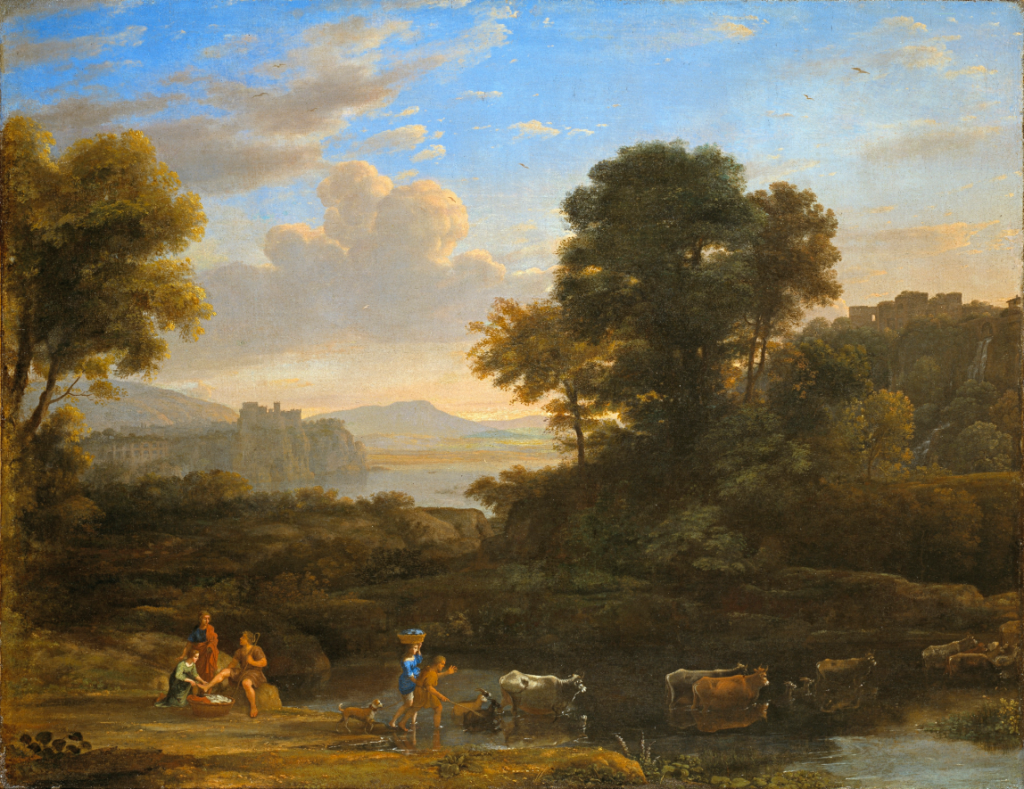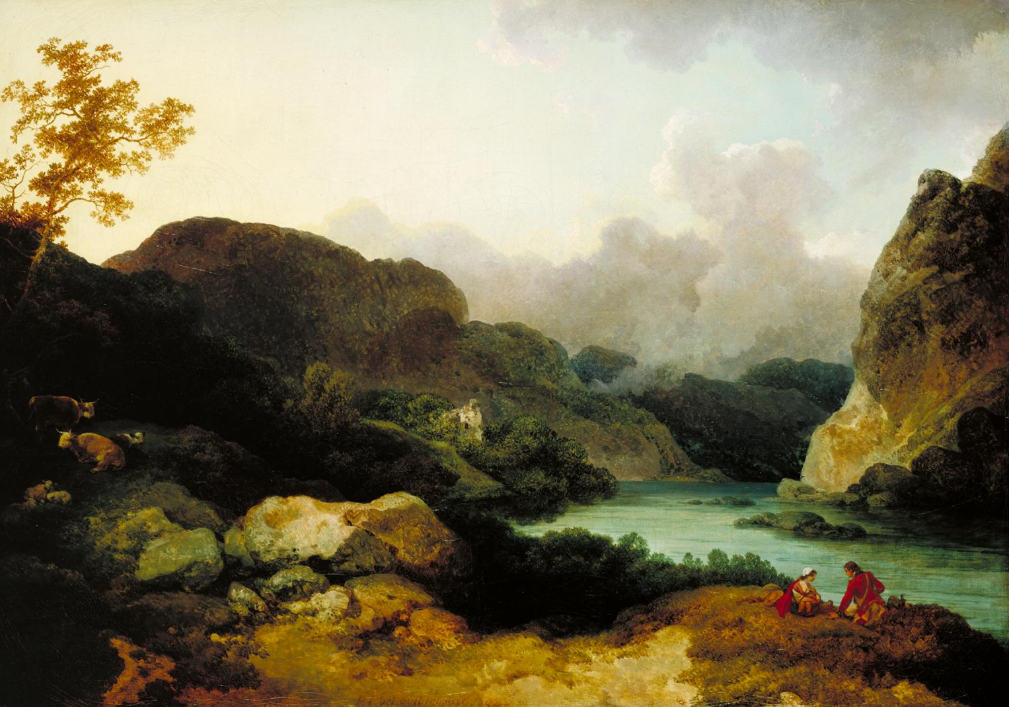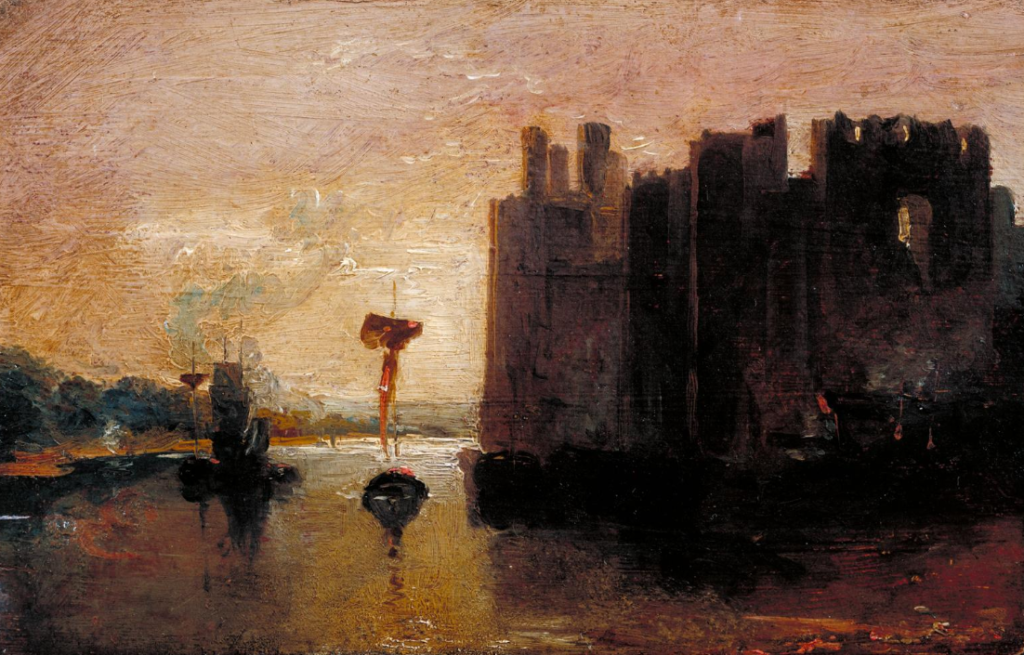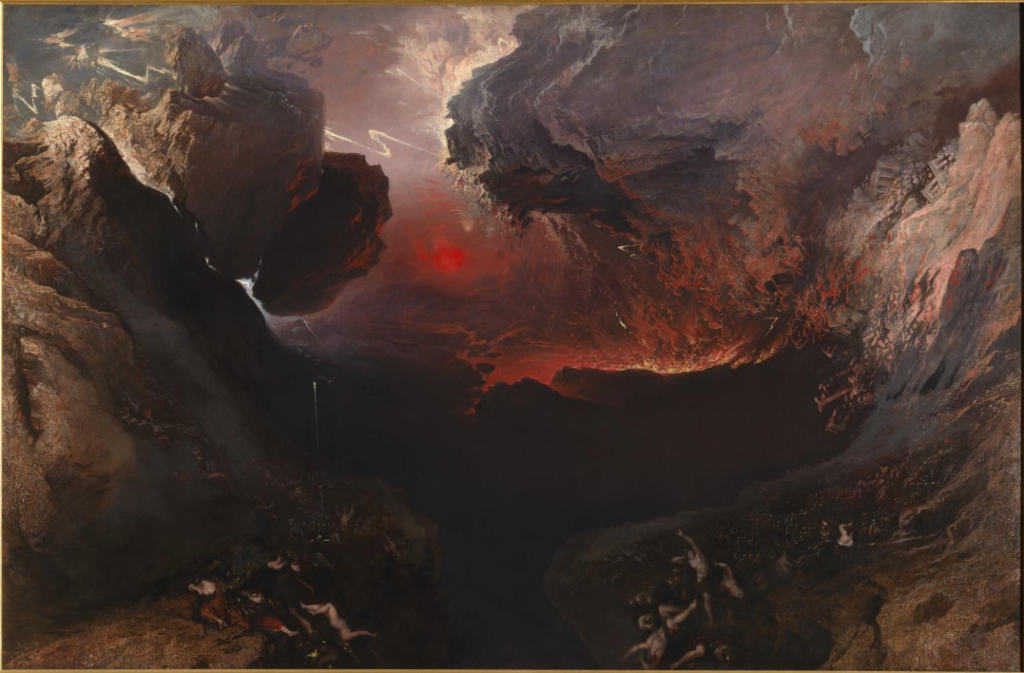The 19th century was the golden age of landscape painting in Europe and America. Three aesthetic concepts established during the Romantic era divided the natural world into categories: the Pastoral, the Picturesque, and the Sublime. The first two represent Nature as a comforting source of physical and spiritual sustenance. The last, as articulated by Edmund Burke in his Philosophical Enquiry into the Origin of our Ideas of the Sublime and Beautiful (1757), refers to the thrill and danger of confronting untamed Nature and its overwhelming forces . This Romantic conception of the sublime proved influential for several generations of artists. Burke associates qualities of “balance,” “smoothness,”and “color” with the beautiful, while he speaks of the sublime in terms such as “vastness” and “terror”.
Beauty/ Pastoral
Beauty is a widely employed term, referring typically to aesthetic experiences that are pleasing, while to some extent transcending preferences and needs that are specific to an individual. That is, the experience of something beautiful will please a subject for reasons that reach beyond the subjective inclinations of the subject and that can be experienced also by many other subjects. The scenes are peaceful, often depicting ripe harvests, lovely gardens, manicured lawns with broad vistas, and fattened livestock. Man has developed and tamed the landscape – it yields the necessities we need to live, as well as beauty and safety.

Picturesque
Picturesque arose as a mediator between opposed ideals of beauty and the sublime, showing the possibilities that existed in between these two rationally idealised states, seen as being artistic but containing elements of wildness or irregularity. Derived from the Italian pittoresco, “from a picture,” the term picturesque de nes an object or view worthy of being included in a picture. It is an aesthetic category developed in the eighteenth-century to describe, in the words of artist and author William Gilpin (1724 – 1804) in his 1768 art treatise Essay on Print, ‘that peculiar kind of beauty which is agreeable in a picture’. It was associated with fashionable landscape gardening, however its cultural significance extended far beyond this.
A picturesque view contains a variety of elements, curious details, and interesting textures, conveyed in a palette of dark to light that brings these details to life. In later publications Gilpin developed the concept more fully. The picturesque may be thought of as halfway between the beautiful, with its emphasis on smoothness, regularity, and order; and the sublime, which is all about vastness, magnitude, and intimations of power; the picturesque must combine aspects of both of those. A picturesque landscape would have characteristics of roughness (which includes textured or variegated surfaces) — indeed, Gilpin wrote that “roughness forms the most essential point of difference between the beautiful and picturesque”


By the last third of the 18th century, Enlightenment and rationalist ideas about aesthetics were being challenged by looking at the experiences of beauty and sublimity as being non-rational. Aesthetic experience was not just a rational decision – one did not look at a pleasing curved form and decide it was beautiful; rather it came naturally as a matter of basic human instinct.
“Disputes about beauty might perhaps be involved in less confusion, if a distinction were established, which certainly exists, between such objects as are beautiful, and such as are picturesque—between those, which please the eye in their natural state; and those, which please from some quality, capable of being illustrated by painting.”
—William Gilpin, ree Essays on Picturesque Beauty, 1794
Sublime
According to Burke, the Beautiful is that which is well-formed and aesthetically pleasing, whereas the Sublime is that which has the power to compel and destroy us. The preference for the Sublime over the Beautiful was to mark the transition from the Neoclassical to the Romantic era. Burke connected the sublime with experiences of awe, terror and danger. Burke saw nature as the most sublime object, capable of generating the strongest sensations in its beholders. This Romantic conception of the sublime proved influential for several generations of artists.
Causation can be divided into formal, material, efficient and final causes. The formal cause of beauty is the passion of love; the material cause concerns aspects of certain objects such as smallness, smoothness, delicacy, etc.; the efficient cause is the calming of our nerves.


“What is most peculiar and original to Burke’s view of beauty is that it cannot be understood by the traditional bases of beauty: proportion, fitness, or perfection. The sublime also has a causal structure that is unlike that of beauty. Its formal cause is thus the passion of fear. He believed that “terror is in all cases… the ruling principle of the sublime.”
In landscape the sublime is exemplified by J.M.W Turner’s sea storms and mountain scenes and in history painting by the violent dramas of Henry Fuseli. The notion that a legitimate function of art can be to produce upsetting or disturbing effects was an important element in Romantic art and remains fundamental to art today. Painters like Turner and Constable wanted to express the sublime in visual art. They were landscape painters and, although in different ways, they emphasized the strength of natural elements and studied the effects of different weather conditiond on the landscape. In 1814 the English landscape painter John Constable put this in his own words when he said the beauty of nature generates a train of associations that leads “to the contemplation of higher, spiritual values”(Anne Lyles, Sublime Nature: John Constable’s Salisbury Cathedral from theMeadows, Tate) and his idea is illustrated in Salisbury Cathedral from the Meadows 1831. Constable’s dark, passionate clouds, are in contrast to the sunlight of the foreground, where you see the church scene as gothic, and negative. These aspects of the painting widens towards sublimity: God, nature and man. Burke favoured this aesthetic idea over Beauty because, he said, ‘astonishment, obscurity and vastness cause a more powerful physical reaction in us than Beauty’s orderly calm’
Because the sublime is emotional, it is traditionally considered something one must experience alone. It’s no coincidence that Rousseau’s last work was titled Reveries of a Solitary Walker. Traditional Romantics associate the sublime directly with nature, and the artist, poet or simply the Romantic experiences the sublime directly witnessing the beauty of nature. But it’s important not to confuse or reduce the sublime with simple beauty, rather, Romantics are interested in natural experiences that utterly consume us, perhaps moving us to tears, and giving us a humbling sense of the wonder and majesty of the natural world.
